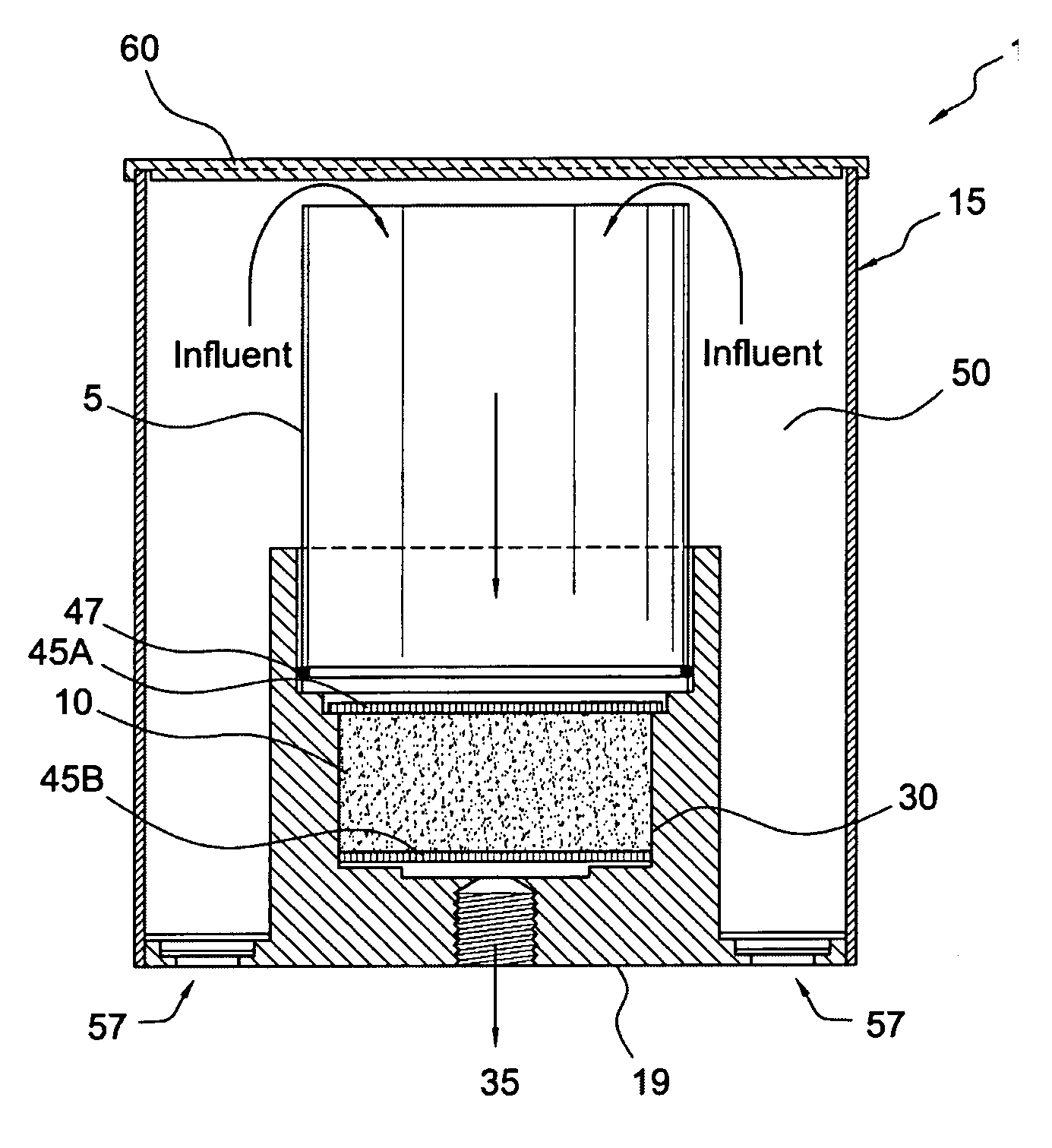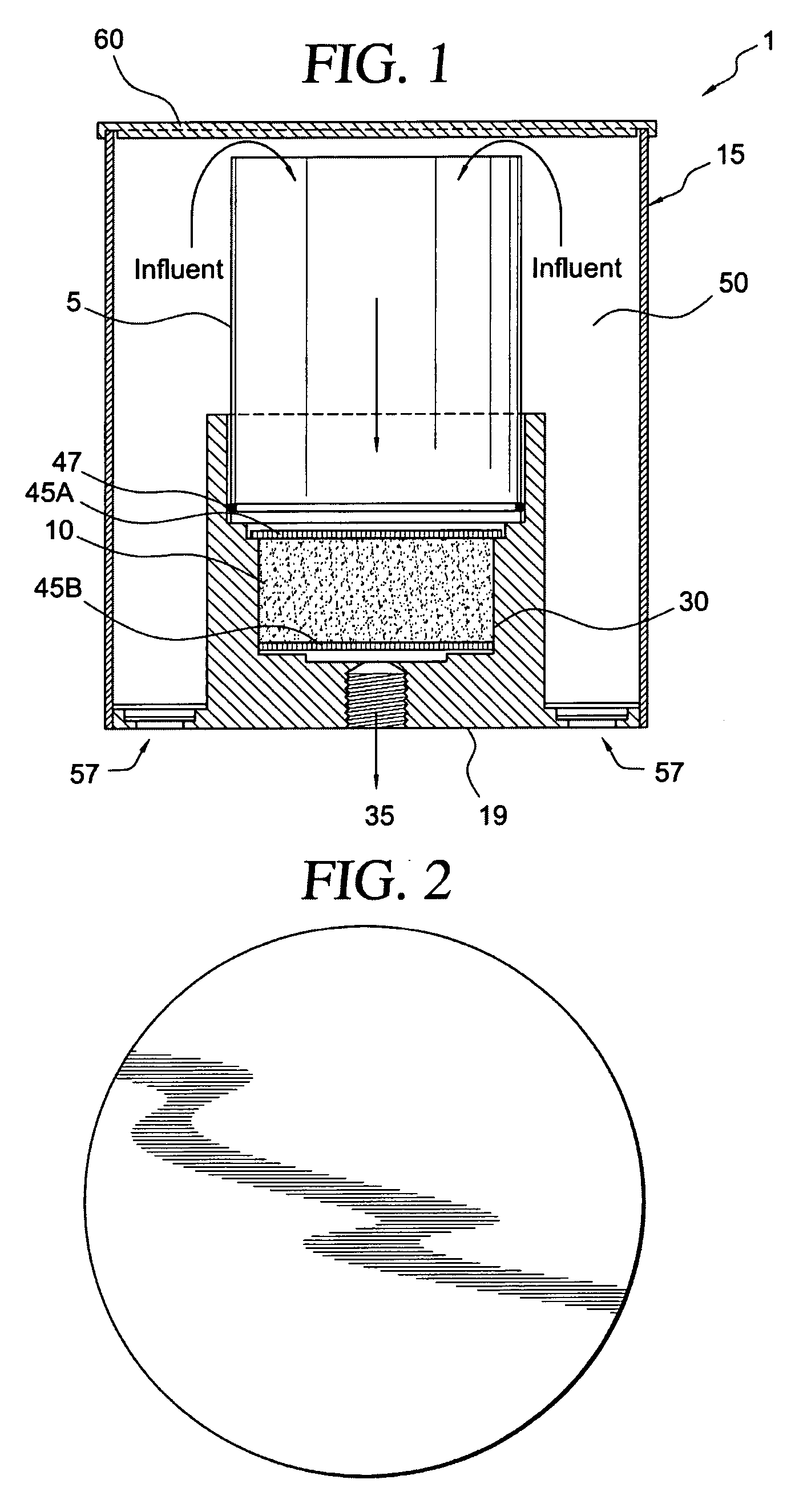Microfiltration devices
a technology of microfiltration and filter, which is applied in the direction of membranes, filtration separation, separation processes, etc., can solve the problems of reducing the filtration performance of microfiltration membrane filters intended for drinking water, the quality control of these types of products sold to consumer markets such as drinking water is usually less stringent, and the performance of microfiltration membrane filters must pass expensive quality control tests, etc., to achieve the effect of improving the filtration performance, improving the performance of the filter, and improving the performan
- Summary
- Abstract
- Description
- Claims
- Application Information
AI Technical Summary
Benefits of technology
Problems solved by technology
Method used
Image
Examples
examples 1-6
ILLUSTRATE THIS FIRST ASPECT OF THE INVENTION
example b1
[0071] A commercially available HFM module having about 6000 cm2 surface area and the following specifications is employed: diameter of module: 53 mm, length of module: 115 mm, composition of HFM: polypropylene, composition of module shell: ABS resin, pore size of HFM: 0.1 μm, outer diameter of HFM: 440 μm, wall thickness of HFM: 50 μm, bubble point of HFM: 0.20 Mpa; surface treatment of HFM: hydrophilic agent coating; differential pressure of water flow through module: about 2.5 psi at 0.5 GPM at room temperature. The HFM module is placed into a filter housing and subjected to an initial flushing with water at 0.5 GPM for 5 minutes to establish the initial differential pressure between the inlet and outlet of the module.
example 1
[0072] After initial flushing of a commercially available HFM module having the specifications of the module used in Example B1, the HFM module is flushed with 0.5 gal of precoat flush water that has 1.0 gm of Dicalite 215 (“DE 215”) diatomaceous earth. DE 215 diatomaceous earth, available from Grefco, has a median particle size of 10 micron and a particle size range of 0.1 micron to 30 micron. The flush water is pumped at the rate of 0.5 gal / min through the filter housing. After the flush water is pumped through the filter, both influent and effluent tubes of the filter are immersed in a drum filled with 50 gallon of Atlanta city water. The effluent from the filter is continuously circulated back to the 50-gallon drum. The differential pressure between the influent and effluent sides of the filter is measured with a differential pressure gauge. The results are shown in Table 1.
PUM
| Property | Measurement | Unit |
|---|---|---|
| Length | aaaaa | aaaaa |
| Length | aaaaa | aaaaa |
| Length | aaaaa | aaaaa |
Abstract
Description
Claims
Application Information
 Login to View More
Login to View More - R&D
- Intellectual Property
- Life Sciences
- Materials
- Tech Scout
- Unparalleled Data Quality
- Higher Quality Content
- 60% Fewer Hallucinations
Browse by: Latest US Patents, China's latest patents, Technical Efficacy Thesaurus, Application Domain, Technology Topic, Popular Technical Reports.
© 2025 PatSnap. All rights reserved.Legal|Privacy policy|Modern Slavery Act Transparency Statement|Sitemap|About US| Contact US: help@patsnap.com



